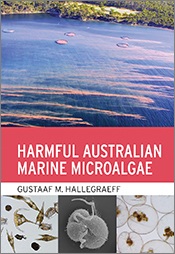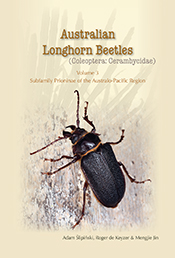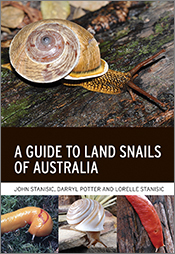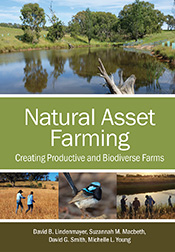Biological Control of Weeds in Australia
Edited by: Mic Julien, Rachel McFadyen, Jim Cullen
Detailed information on over 90 weed species that have been targeted for biological control.
Biological control of weeds has been practised for over 100 years and Australia has been a leader in this weed management technique. The classical example of control of prickly pears in Australia by the cactus moth Cactoblastis cactorum, which was imported from the Americas, helped to set the future for biocontrol of weeds in many countries. Since then there have been many projects using Classical Biological Control to manage numerous weed species, many of which have been successful. Importantly, there have been no serious negative non-target impacts – the technique, when practised as it is in Australia, is safe and environmentally friendly. Economic assessments have shown that biocontrol of weeds in Australia has provided exceedingly high benefit-to-cost ratios. + Full description
This book reviews biological control of weeds in Australia to 2011, covering over 90 weed species and a multitude of biological control agents and potential agents. Each chapter has been written by practising biological control of weeds researchers and provides details of the weed, the history of its biological control, exploration for agents, potential agents studied and agents released and the outcomes of those releases. Many weeds were successfully controlled, some were not, many projects are still underway, some have just begun, however all are reported in detail in this book.
Biological Control of Weeds in Australia will provide invaluable information for biological control researchers in Australia and elsewhere. Agents used in Australia could be of immense value to other countries that suffer from the same weeds as Australia. The studies reported here provide direction to future research and provide examples and knowledge for researchers and students.
- Short descriptionNews
This title is no longer available in print, but can still be purchased as an eBook.
Read an article which discusses the book in the Canberra Times titled 'Why the invaders are winning'.
Reviews
"Most ecologists will be familiar with at least one great Australian weed biological control success story thanks to iconic photographs of prickly pear 'before and after' the introduction of Cactoblastis that feature in many ecology textbooks. Of course, there is much more to biological control of weeds in Australia than that, and if you want to find out all about it, then you need look no further than this book!"
Quentin Paynter, Australian Journal of Entomology, pp. 221, Vol 30, 2012
"... the editors are to be congratulated in bringing this book together. It is long overdue. If you work on weeds in any way Biological Control of Weeds in Australia is an absolute must for your bookshelves."
Robyn Barker & John Clarkson, Australasian Systematic Botany Society Newsletter 151, June 2012, pp. 27-29
"This book is a compendium of examples detailing the many vectors of control utilised in the biological control of weeds and the methodologies implemented. It addresses over 90 species of weeds that organic and conventional agriculturalists will relate to or have experience with."
Greg Paynter, Australian Organic Producer, Issue 17, pp. 34, June 2012
"This book compiles valuable information from a wide range of sources into one easily accessible publication. It will be an excellent resource for biological control workers the world over and provide useful insights into the biological control process for anyone involved in or interested in weed control and management."
RG Richardson, Plant Protection Quarterly, Vol 27(1) 2012, pp. 43
Details
ePDF | March 2012ISBN: 9780643104204
Publisher: CSIRO Publishing
Available from eRetailers
ePUB | March 2012
ISBN: 9780643104211
Publisher: CSIRO Publishing
Available from eRetailers
Features
- A unique collation of information for Australian weed research and management
- Contains all the information about biological control of weeds in Australia in one book
- Provides key references for further information
- Will become a well cited publication
Contents
ContentsSponsors
Foreword
List of contributors
Introduction
Acknowledgements
Abbreviations
Biological control of Australian plants: a South African and US perspective
Acacia nilotica subsp. indica (Benth.) Brenan – prickly acacia
Ageratina adenophora (Spreng.) King & Robinson – crofton weed
Ageratina riparia (Regel) K. & R. – mistflower
Alternanthera philoxeroides (Martius) Grisebach – alligator weed
Ambrosia artemisiifolia L. – annual ragweed
Anredera cordifolia (Ten.) Steenis – Madeira vine
Argemone mexicana L. and Argemone ochroleuca Sweet – Mexican poppy
Asparagus asparagoides (L.) Druce – bridal creeper
Asphodelus fistulosus L. – onion weed
Baccharis halimifolia L. – groundsel bush
Billardiera heterophylla (Lindl.) L. Cayzer & Crisp – sollya
Bryophyllum delagoense (Ecklon & Zeher) Schinz – mother-of-millions
Cabomba caroliniana Gray – cabomba
Carduus nutans L. – nodding thistle
Carduus pycnocephalus L. – slender thistle
View the full table of contents.
Authors
Each of the editors has been involved in research and management of biological control of weeds for over 30 years. They have managed teams that have been involved in all facets of research in this field including overseas exploration, host specificity tests, releasing and evaluation. Each has contributed significantly to the scientific literature.Mic Julien was leader of CSIRO Entomology’s Ecology and Management of Tropical Weeds Group.
Rachel McFadyen works at the Weed Society of Queensland.
Jim Cullen was the chief of the CSIRO Division of Entomology.








